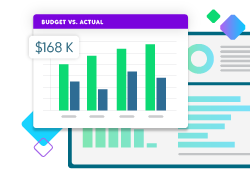I Signed up for What?! A Primer for Pre- and Post-Award Grant Readiness

In the last five years, nonprofits have witnessed a significant upswing in the availability of federal funding. Initiatives like the American Rescue Plan, the Bipartisan Infrastructure Act, the CHIPS and Science Act, and other pass-through funding to states and local governments have spurred a surge in nonprofits seeking federal funding.
This trend is not limited to a specific size or experience level of nonprofits, as both large and small, experienced and new, are venturing into these funding opportunities. However, many organizations are unprepared for the multitude of regulations and requirements associated with managing federally funded programs.
Understand Your Organization’s Capacity
Your organization should consider these four components before applying for any grant, especially those connected to federal dollars.
- Risk Analysis – what could threaten the project or the organization?
- Capacity and/or Partnership – what can the organization handle internally? What needs are missing? Who might be a suitable partner to support the project?
- Program Analysis – what will happen to the program to accommodate the growth?
- Sustainability – what needs to be built in now for long-term success? How will the program continue after the grant concludes?
Spend some time thinking through your risk analysis, because it can show up in several parts of your organization. When assessing organizational risk, there are five specific areas to consider before applying for funding.
- Financial: this risk could result in a negative financial impact on the organization, such as waste of resources or loss of assets.
- Operational: this risk could prevent the organization from operating in the most effective and efficient manner or be disruptive to other operations.
- Regulatory/Compliance: this risk could expose the organization to fines and penalties from a regulatory agency due to non-compliance with laws and regulations.
- Reputational: this risk could expose the organization to negative publicity. Think, “What if my organization’s name showed up in a story in the Washington Post about this?”
- Strategic: this risk could prevent an organization from accomplishing its objectives or meeting its goals.
In addition to risk, federal government agencies are asking applicants/recipients to demonstrate their ability to manage federal grants through a robust internal controls policy and procedures manual (sometimes during the pre-award stage) that outlines how organizations will be good stewards of government funding. This is the key to risk avoidance and mitigation.
Use the RBW Strategy Risk Assessment Questionnaire for Government Grants to guide specific considerations on executing a federal grant award, including subrecipient monitoring, financial integrity, and recipient oversight capacity.
Review the Funding Opportunity Announcement Carefully
When you start the application process, review the announcement carefully for programmatic requirements such as evaluation, organizational structure, planning, and outreach. Use a proactive lens towards the post-award phase and understand if modifications are needed from a programmatic, financial, and operations vantage.
Before agreeing to take on federal funding, your organization should thoroughly understand the financial implications, including how funds will need to be tracked, how staff and contractor time and effort will need to be recorded, what program costs are allowable, and how they will be communicated and tracked with program staff and finance staff. From an operations perspective, how will reporting expectations impact current operations, and who is involved in managing the various administrative requirements?
Assemble Key Stakeholders
Bring the following stakeholders together in the application stage to understand, discuss, and contribute to the program development. This collaboration will not only make the application stronger, but it is also much more likely that the organization will be prepared to execute the program as planned and provide the long-term management and oversight required of large multi-year awards. These key stakeholders include:
- Development staff or those involved in fundraising or grant-seeking efforts
- Program staff or those who are conducting the program for which funding is requested
- Project Oversight staff such as the Principal Investigator or other project management role
- Financial staff responsible for budget creation and accessing and controlling relevant financial documentation
- Organizational Leadership who has the authority to sign and commit the organization
- Quality Assurance team members, Subject Matter Experts, and/or Program Evaluators as applicable
Update Policies and Procedures
The organization receiving federal funding will be impacted not just from the influx of dollars but also in the areas of policies (new ones may be needed and current ones updated to meet standards), infrastructure (programs, systems, tools, and training may need to be updated), management (recordkeeping, tracking, reporting may all need to be developed, revised, or implemented differently), and single audit preparation (for organizations expending more than $750,000 in federal funds in a single year).
Ensure Program Sustainability
With a focus on the grant management, it can be easy to lose sight of how the program will continue. Besides seeking out additional funding (renewal, and new private and public sources), there are some options internally to help sustain the program. Some considerations are:
- If this program is critical, can some of it be absorbed with general operating support?
- If you are leveraging outside partners, is there a vested interest in continuing this program as a collective? If so, can there be shared financial investment?
- From a public relations perspective, how are you using social media, email campaigns, and other digital and print marketing sources to share the positive impacts of the program?
There are other sustainability measures, but these reflect some ways to maintain the good work that is taking place through the federal award.
Avoid These Common Pitfalls
Here are a few common mistakes that organizations new to federal grant funding often make.
- Lacking systems and processes, including financial (coding to track grant dollars to program budget), administrative (time tracking, measuring goals that aren’t the same as what was listed in the application, reporting deadlines), or programmatic (onboarding time for grant specific staff, lack of marketing/outreach to reach intake numbers committed to).
- Poor change management infrastructure, including a breakdown of team communications due to turnover or incomplete training (document everything to prepare in advance for the inevitable change in personnel at some level of the program), program changes required due to facility closures or delivery method changes that happen at the program delivery level but are not communicated to the full grant team for broader impact inspection, and unmet expectations such as delayed information from staff or missing partner work plans.
- Lack of access, such as the Grants.gov AOR is on vacation when the grant is due, or the Two Factor Authorization code pings someone’s phone which is no longer with the organization. It might also be new equipment installed as part of the grant doesn’t include training for all involved parties or the drivers necessary to run the equipment are not added to staff computers. Work stoppages in a tangential industry or a shared facility cross-scheduling when the program is set to happen are just a few of the potential challenges lack of access can create.
Fund Accounting Software that Drives Impact
Find out how Blackbaud’s Financial Edge NXT® fits your organization.

Create a Plan of Action to Manage the Grant Post-Award
Federal funds are a powerful tool to make a significant impact in the community and among those your organization serves. It can be a catalyst for further investment at a level otherwise unattainable. There are regulations and requirements necessary to maintain the flow of public dollars and public trust in your organization. But with proper planning and preparation, your organization can manage federal funds, conduct federally supported programming, and create an extraordinary impact in your communities, and on the world.
Want more information on creating a plan of action for your organization to manage your federal grants? Check out the webinar I Signed Up for What? A Primer for Pre- and Post-Award Grant Readiness.
Becky Jascoviak of RBW Strategy co-wrote this article

